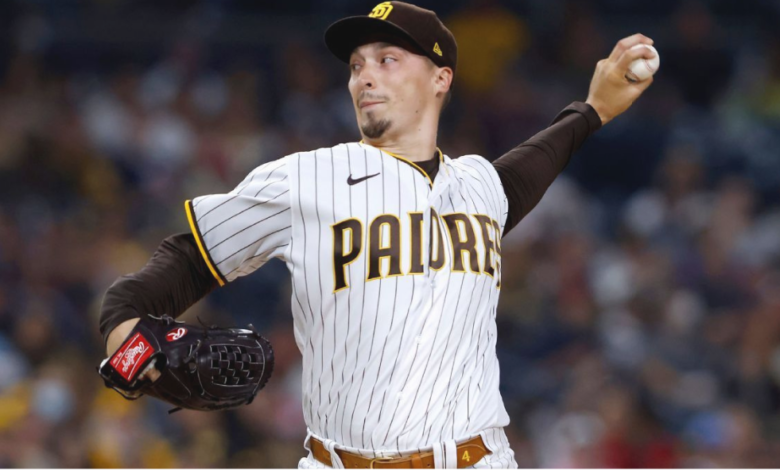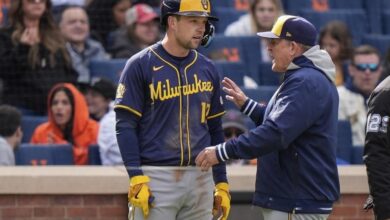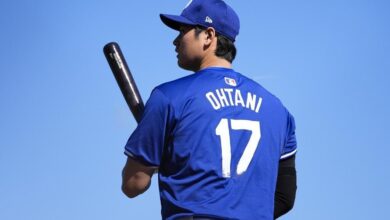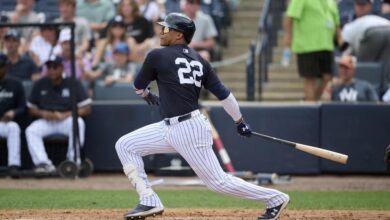
Blake Snell epitomizes the modern MLB ace while considering the potential significant costs associated with his approach.
The 2023 NL Cy Young winner is an example of how the practice of giving starters fewer innings and more rest has paid off. However, it might also be why clubs are hesitant to sign a big-ticket agreement.
The enhanced and upgraded Scott Boras “pillow contract”—the extra hard version for 2024—is now offered at a discounted price.
When Adrián Beltré signed a one-year deal with the Boston Red Sox in 2010 following a disappointing season with the Seattle Mariners, the agency coined the phrase.
Then, Boras said, “It’s soft, it’s there, but it’s not with you all the time when you wake up in the morning.” It’s a contract that lasts a year. It’s a cushion. After using it for a short while, you continue.
Beltré also received a player option year, but Boras said it was mostly for “a calamity scenario” due to its small value.
This season, Boras gave Matt Chapman and Cody Bellinger more substantial pillow contracts since neither player could secure the type of long-term deals the agency was looking for. After Bellinger hit 209 for three years in a row, the business wasn’t entirely convinced by his one season of recovery. Chapman’s struggles last season against high fastballs (.172) and spin (.188), which is essentially what MLB pitching consists of these days, raised serious caution flags.
Here’s the latest update: both agreed to three-year contracts with opt-out options after the first and second years. Both signed with clubs you assumed were favorites from the start; Bellinger of the Chicago Cubs and Chapman of the San Francisco Giants were rewarded for their perseverance.
What about the other members of The Boras 5: J.D. Martinez, Blake Snell, and Jordan Montgomery, his final unsigned free agent? Martinez was only interested in a one-year contract since, at 36, he had limited defensive value. Because evaluators are so obsessed with swing-and-miss things, Montgomery, who has a slightly below-average strikeout percentage (21.4%), may be looking at one of those extra-firm pillow deals.

It’s Snell who has me puzzled as to why no club has yet to capitalize on what Boras perceives to be his worth. Blake Snell is worth around $30 million times seven and Carlos Rodón is valued at $27 million times six. Rodón had a 115 ERA+ over 847 innings, had undergone Tommy John surgery, and had never pitched 180 innings. Blake Snell has pitched 180 innings twice, had no arm surgery other than the removal of loose bodies from his elbow in 2019, and after 992 innings, he has a 127 ERA+.
You’ve heard the criticism about Blake Snell: he walks too many players, is unreliable, and doesn’t pitch well into games. I understand. He’s not your standard-issue ace. He is an ace, though, a modern-day ace who misses bats like very few starters on the earth and who doesn’t have to take the ball into the eighth inning.
Snell’s 2023 rankings show you an ace who, although not a “workhorse,” dominates games in a way that very few pitchers can:
Blake Snell 2023 Rankings
| IP per Start | 5.6 | Tied-43rd |
| Innings | 180 | T-24th |
| Quality Starts | 20 | T-5th |
| Avg. Game Score | 61.4 | T-2nd |
| Pitches per Start | 99 | T-1st |
| 100+ Pitch Games | 18 | T-1st |
In walks and ERA, Blake Snell was the league leader. That is absurd. How is that possible? His baseball-spinning prowess is so great that it makes walks irrelevant. These figures are horrifying:
Hitters vs. Blake Snell Breaking Pitches, 2023
| Hits | Avg. | |
|---|---|---|
| Overall | 22 | .093 |
| Two Strikes | 13 | .066 |
| RISP | 4 | .066 |
| RISP Two Outs | 1 | .032 |
| RISP Two Strikes | 1 | .019 |
| RISP, Innings 4+ | 0 | .000 |
Essentially, he allowed a hit per 47 breaking pitches, or fewer than one every start. Just four of the 272 breaking pitches he threw with runners in scoring position were hit. And with RISP and two outs? One hit out of 128 breaking pitches is nearly unheard of.
Regarding the argument that someone is “not an ace,” a loose definition of an ace is a pitcher who consistently throws at a high level. Blake Snell has been an ace during the last seven seasons, as this organization demonstrates:
Lowest ERA, 2017-23 (Min. 150 GS)l
| 1. Clayton Kershaw | 2.68 |
| 2. Justin Verlander | 2.69 |
| 3. Max Scherzer | 2.78 |
| 4. Gerrit Cole | 3.14 |
| 5. Blake Snell | 3.17 |
Is Blake Snell not the product of the ultramodern ace front offices?
Teams use 18–22 hitters to train starters to miss bats before bringing in one hard-throwing specialist reliever at a time. Because they genuinely feel that a fresh reliever is preferable to a starter facing the same hitter three times, teams do not want their pitchers to work themselves into the game.
They created this game. The last four seasons have had the fewest number of qualifying pitchers. Compared to previous baseball seasons, starters now pitch with greater rest, throw fewer pitches, and log fewer innings. No one has ever asked them to perform less:

The above chart’s tipping point occurred in 2017, when qualifying pitchers unexpectedly fell 22%, from 74 to 58, and are probably never to return. So why? Pitcher injuries were increasing, particularly blowouts of the UCL. And why was that taking place? a rise in both velocity and year-round competitive pitching at the amateur level before 2017. This was the first big league generation to grow up as genuine showcase stars. Regarding the pandemic of blown elbows, the American Sports Medicine Institute stated the following in 2016:
“An orthopaedist operating on a ruptured ulnar collateral ligament, often known as the “Tommy John” ligament, will nearly invariably find that the ligament has become frayed over time as a result of overuse and repetition. While Major League pitchers of the past grew up pitching professionally for only a few months out of the year, teenagers may today play competitive baseball virtually year-round thanks to leagues and clubs. An excessive amount of competitive pitching has been linked to arm injuries in research.
The average amount of pitches in a start from 1998 to 2016 was impressively consistent, averaging between 93 and 97 pitches with an annual variation of no more than three. Then it fell precipitously, going from 92 in 2017 to 88 in 2018 and 86 in 2019. The previous season, it was only 85.
In just 10 seasons, the terrain has undergone the following changes:
| Year | QS% | IP/GS | P/GS | Qualified Pitchers |
|---|---|---|---|---|
| 2014 | 54% | 6.0 | 96 | 88 |
| 2023 | 35% | 5.1 | 85 | 44 |
Blake Snell beat MLB statistics last season, averaging 5.6 innings and 99 pitches each start. When evaluated against the current game, rather than the one from ten or even fifty years ago, Snell emerges as a dominant six-inning pitcher. And yet he’s still not signed.




